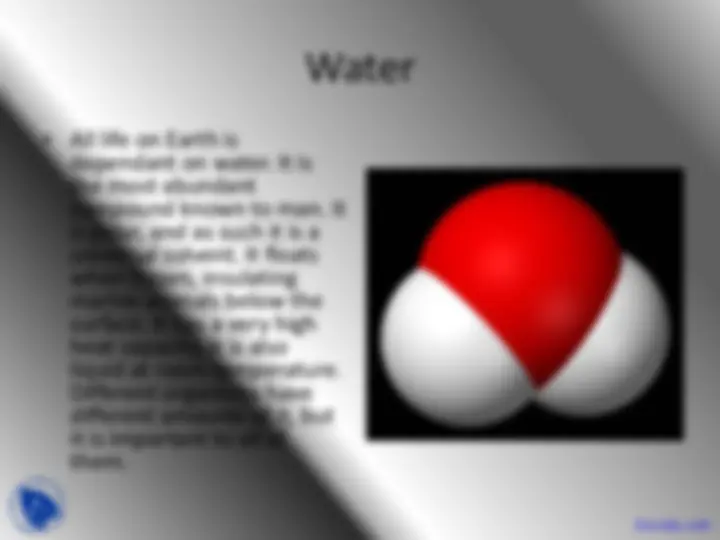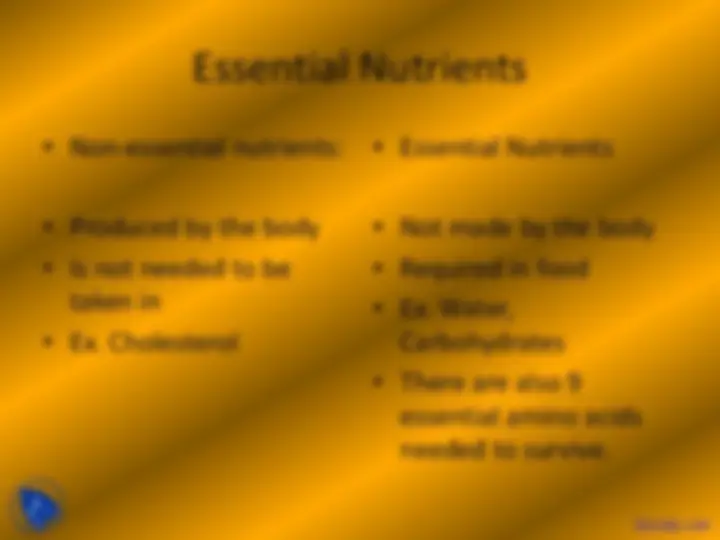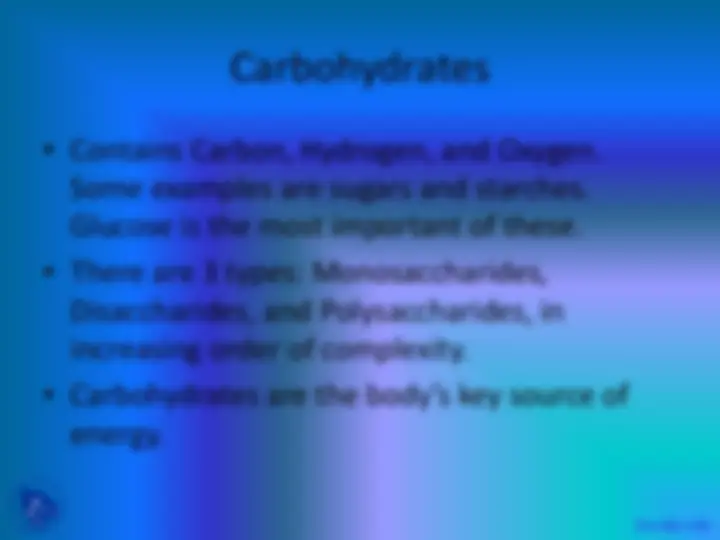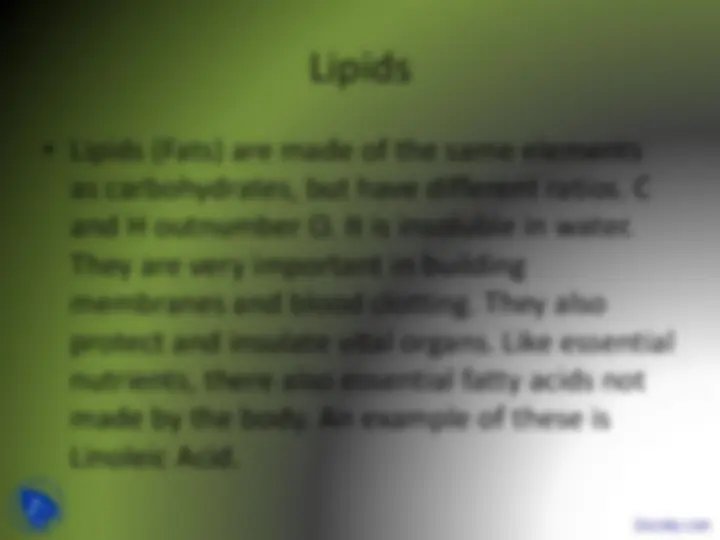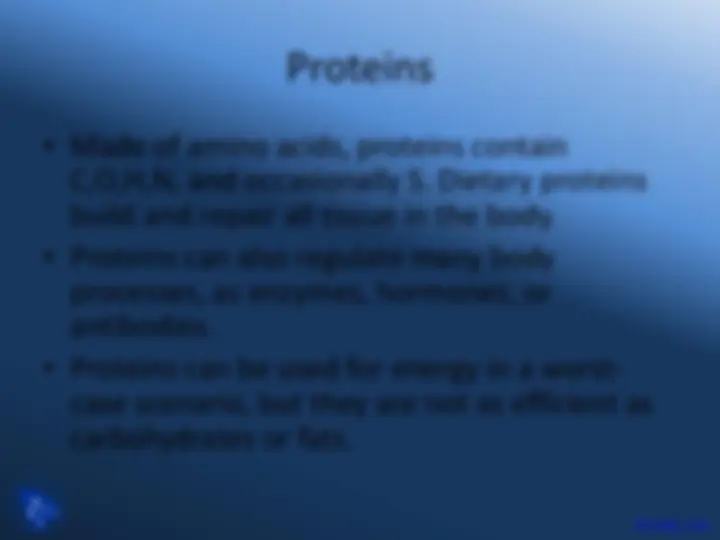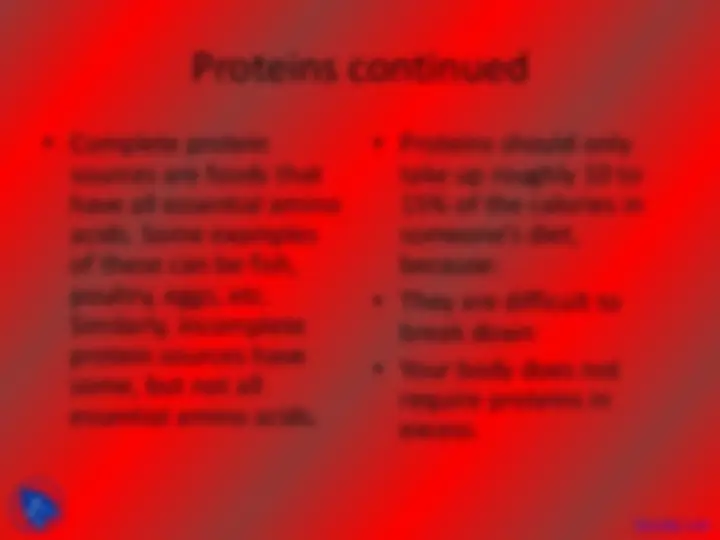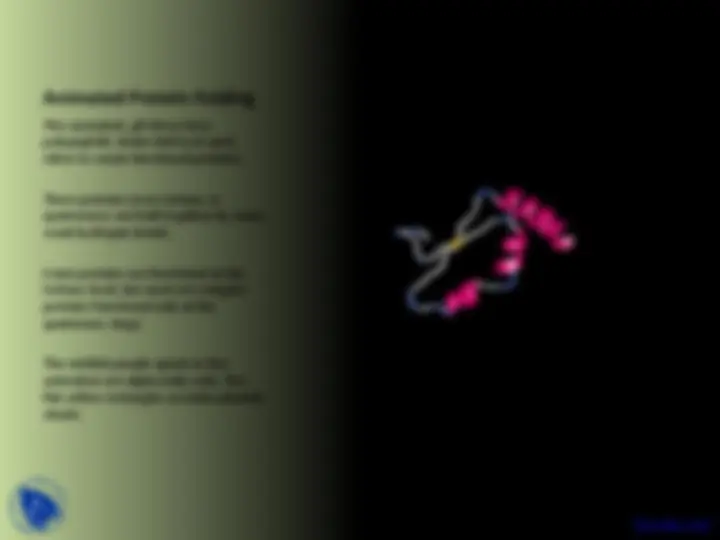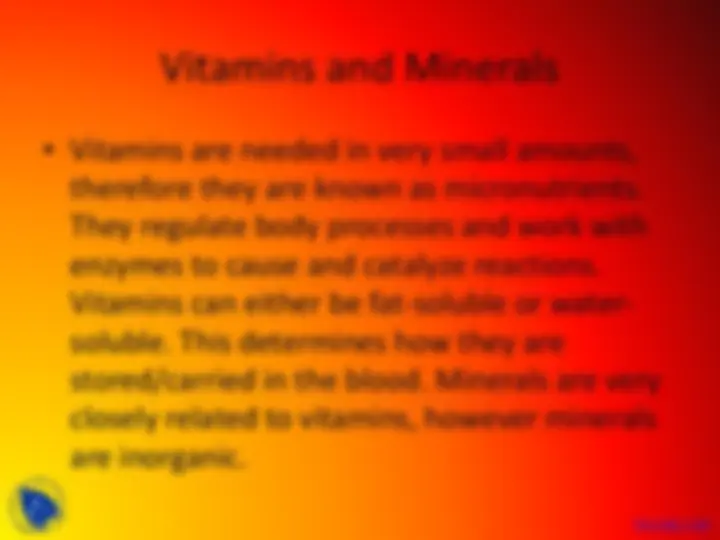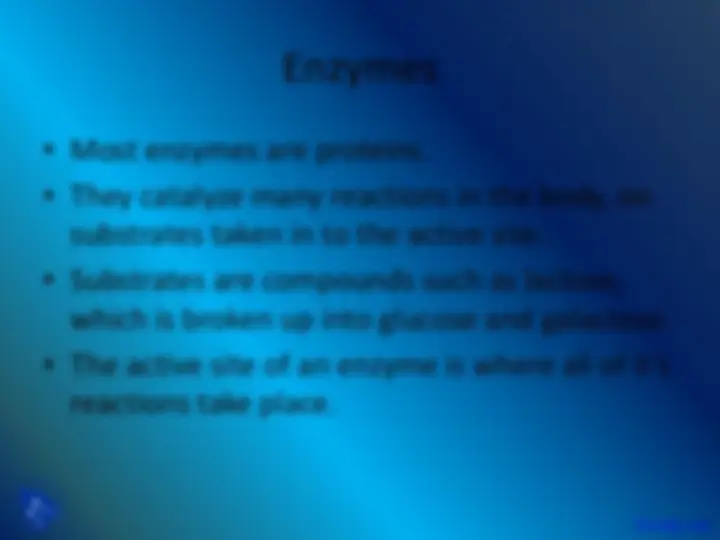Download Biochemistry: The Study of Life's Chemical Composition and more Slides Biology in PDF only on Docsity!
Biochemistry
Outline
- Biochemistry is the study of life, and its chemical composition. The most common elements are Carbon, Oxygen, and Hydrogen, also with Nitrogen, Phosphorus, and Sulfur. Every part of every living thing has to do with Biochemistry. It is very important when dealing with medicine, nutrition, and genetics.
Essential Nutrients
- Non-essential nutrients:
- Produced by the body
- Is not needed to be taken in
- Ex. Cholesterol
- Essential Nutrients
- Not made by the body
- Required in food
- Ex. Water, Carbohydrates
- There are also 9 essential amino acids needed to survive.
Carbohydrates
- Contains Carbon, Hydrogen, and Oxygen. Some examples are sugars and starches. Glucose is the most important of these.
- There are 3 types: Monosaccharides, Disaccharides, and Polysaccharides, in increasing order of complexity.
- Carbohydrates are the body’s key source of energy.
Blood Sugar
- An overabundance of glucose in the blood will cause a different protein, insulin, to be released into the blood. This will cause the glucose to be changed to glycogen, creating a lower glucose level. This can later be changed back into glucose for later use.
Lipids
- Lipids (Fats) are made of the same elements as carbohydrates, but have different ratios. C and H outnumber O. It is insoluble in water. They are very important in building membranes and blood clotting. They also protect and insulate vital organs. Like essential nutrients, there also essential fatty acids not made by the body. An example of these is Linoleic Acid.
Proteins continued
- Complete protein sources are foods that have all essential amino acids. Some examples of these can be fish, poultry, eggs, etc. Similarly, incomplete protein sources have some, but not all essential amino acids. - Proteins should only take up roughly 10 to 15% of the calories in someone’s diet, because: - They are difficult to break down - Your body does not require proteins in excess.
Protein Structure (1)
Primary Structure Secondary Structure
Animated Protein Folding This animated .gif shows howpolypeptide chains fold over each other to create functional proteins.
These proteins (now tertiary orquaternary) are held together by many weak hydrogen bonds.
Some proteins are functional at thetertiary level, but most are complex proteins functional only at thequaternary stage.
The reddish purple spirals in thisanimation are alpha-helix coils. The flat yellow rectangles are beta-pleatedsheets.
Vitamins and Minerals
- Vitamins are needed in very small amounts, therefore they are known as micronutrients. They regulate body processes and work with enzymes to cause and catalyze reactions. Vitamins can either be fat-soluble or water- soluble. This determines how they are stored/carried in the blood. Minerals are very closely related to vitamins, however minerals are inorganic.
Enzyme models
Lock and Key
- The lock and key model is when the enzyme is only shaped to take in one substrate, and does not conform.
Induced Fit
- The induced fit model suggests that enzymes are not always completely compatible, but can change their shape slightly to fit.
Bibliography
- http://en.wikipedia.org/wiki/Essential_amino_acid
- http://z.about.com/d/chemistry/1/0/U/a/water.jpg
- http://users.rcn.com/jkimball.ma.ultranet/BiologyPages/P/Peptide. gif
- http://kvhs.nbed.nb.ca/gallant/biology/secondary_structure.jpg
- http://kvhs.nbed.nb.ca/gallant/biology/tertiary_structure.jpg
- http://kvhs.nbed.nb.ca/gallant/biology/quaternary_structure.jpg
- www.cs.ucl.ac.uk/staff/d.jones/t42morph.html
- http://waynesword.palomar.edu/images/enzyme5.gif
- http://upload.wikimedia.org/wikipedia/commons/thumb/2/24/Ind uced_fit_diagram.svg/648px-Induced_fit_diagram.svg.png

